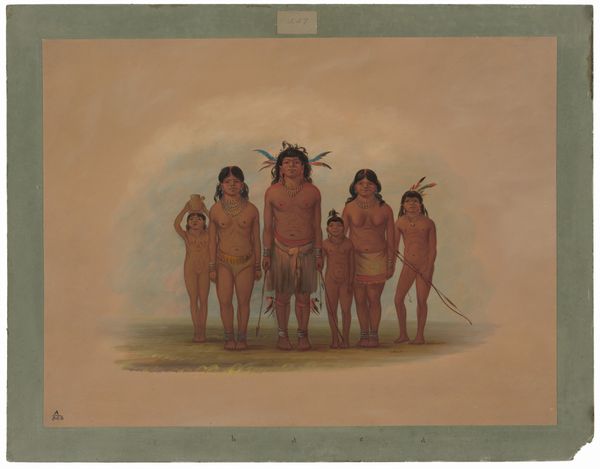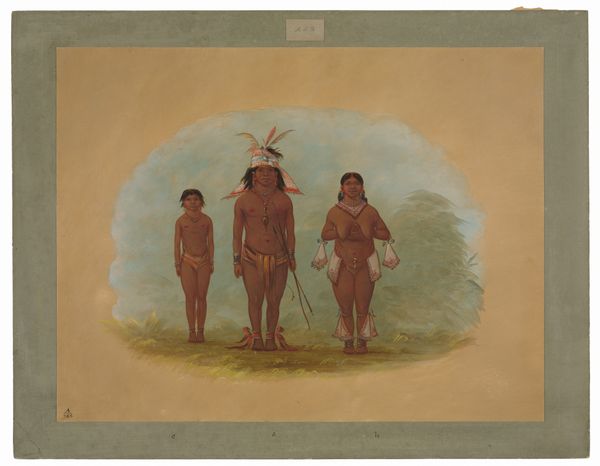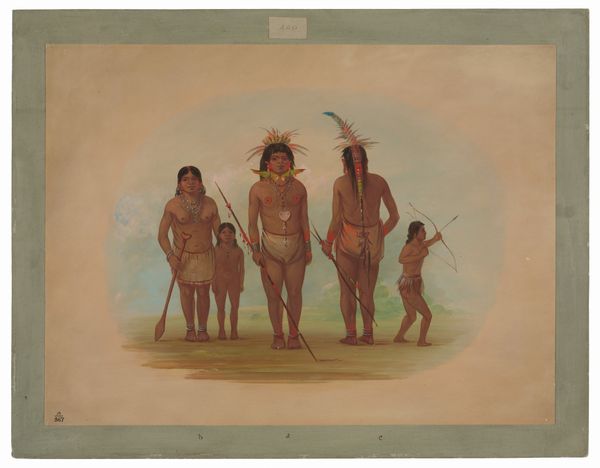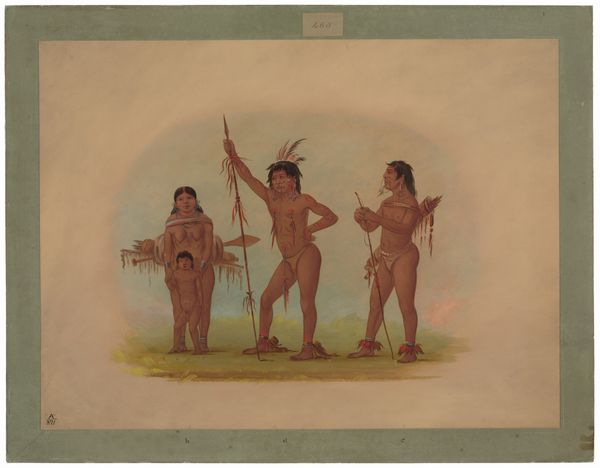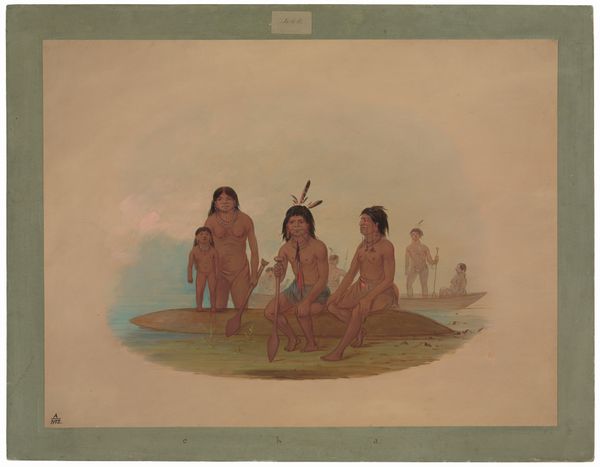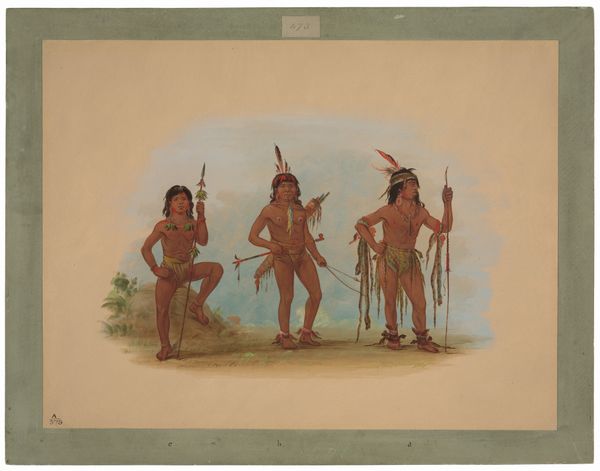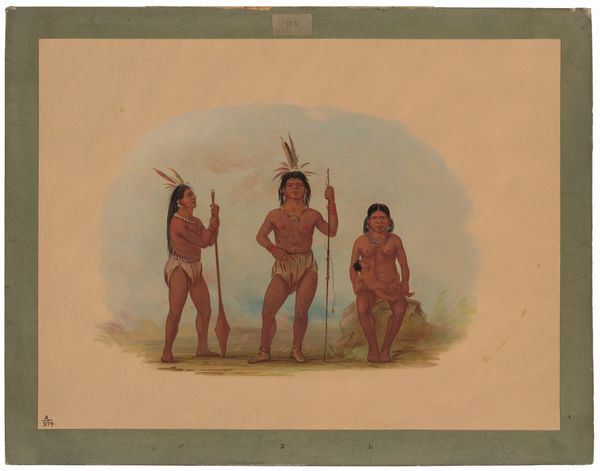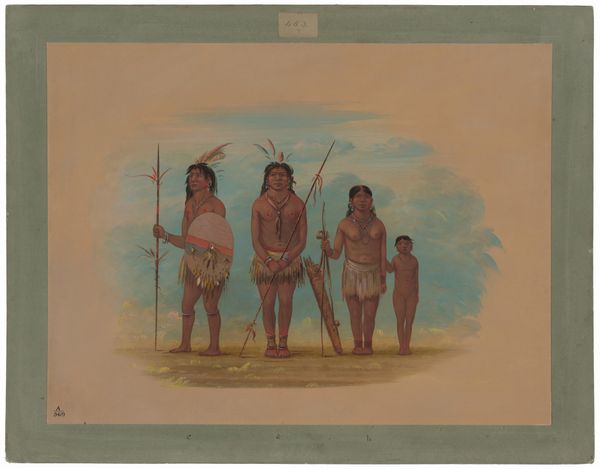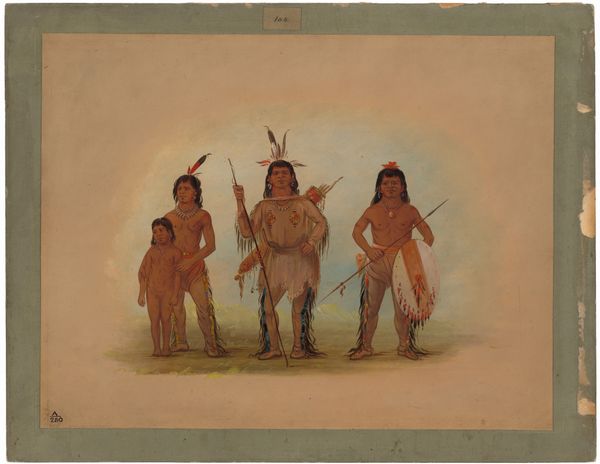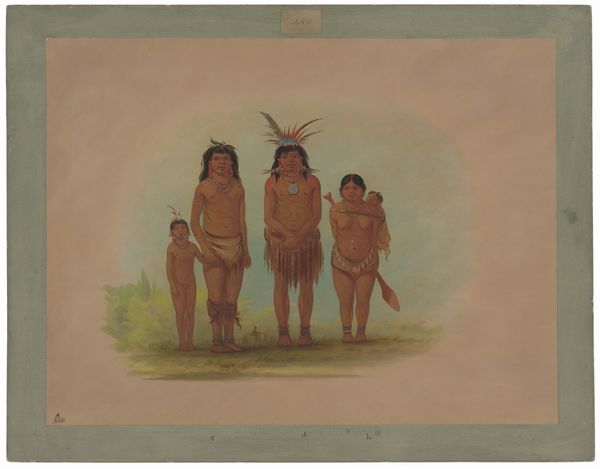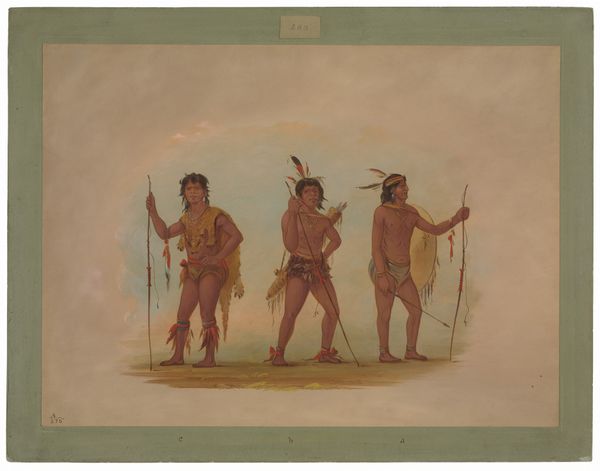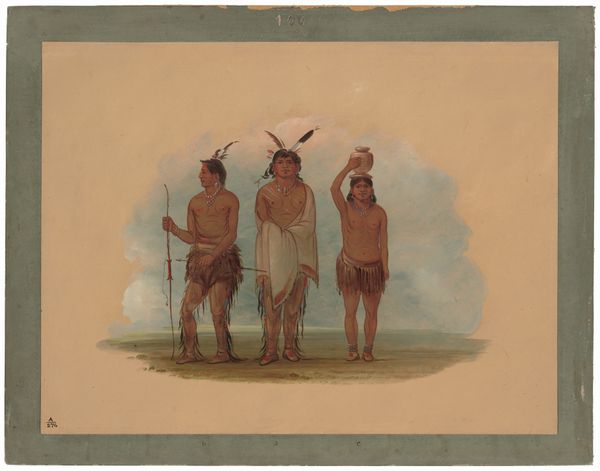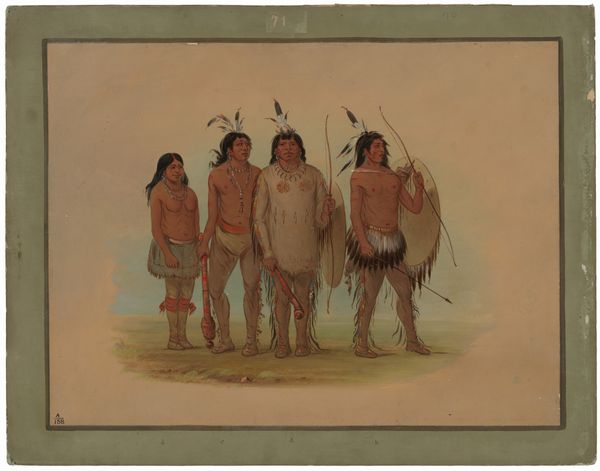
gouache
#
portrait
#
gouache
#
indigenous-americas
Dimensions: overall: 46.5 x 62.2 cm (18 5/16 x 24 1/2 in.)
Copyright: National Gallery of Art: CC0 1.0
Editor: Here we have George Catlin's watercolor, "Orejona Chief and Family," likely painted between 1854 and 1869. The composition, with its family portrait set against a pale backdrop, has a certain poignant stillness to it. It feels almost staged. What do you make of Catlin's depiction here? Curator: Staged, yes, and maybe a little…longing? Catlin’s portraits of Indigenous peoples always strike me as a complex dance. He's both documenting and, in a way, mourning a culture he saw disappearing. Notice the details – the ornaments, the face paint, even the tools they carry. These aren’t just random details. It’s a careful curation, isn’t it, by both Catlin and perhaps his sitters, for posterity, for remembrance, but tinged by… loss, maybe? Editor: That idea of documentation tinged with loss resonates. The family seems almost…frozen in time. Do you think that's intentional? Curator: Oh, absolutely. And it’s a layer cake, this painting, isn't it? Because Catlin isn’t just documenting; he's interpreting. He's filtering what he sees through his own cultural lens, and maybe even inventing a little, too. That soft watercolor…it romanticizes, softens, doesn't it? It pushes it toward a specific emotional space for viewers back East. A space where pity and admiration dance. Editor: So it’s less a photograph and more… a carefully constructed narrative? Curator: Exactly! Like a carefully written short story, intended to provoke specific feelings. Does knowing that change how you see the family here? Editor: Definitely. I went from seeing a simple portrait to a loaded tableau with a lot more under the surface. It makes you wonder about all the stories *not* being told. Curator: Yes! Art's trick, its siren song, to nudge you to reflect on larger realities!
Comments
No comments
Be the first to comment and join the conversation on the ultimate creative platform.
